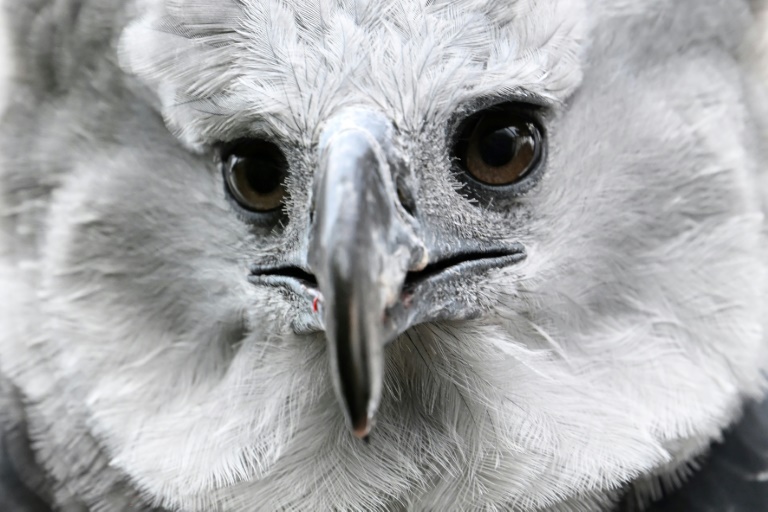Wounded and wary, the young couple appear to be fond of each other: their arranged romance, years in the making, is aimed at preserving the fast-vanishing harpy eagle, one of the world’s largest birds of prey.
In an immense dome in Colombia, biologists have recreated a tropical rainforest where they have slowly introduced the monogamous birds in the hope that they will succeed in mating and producing an eagle.
That is, if the female doesn’t become territorial and kill her suitor.
“A bad decision on our part could lead to an attack,” said Luisa Escobar, research coordinator at Biopark La Reserva, a foundation outside Bogota that works to preserve Colomia’s rich biodiversity.
The harpy eagle, one of the most powerful and largest eagles in the world, capable of preying on monkeys and sloths, is hunted to near extinction in some parts of its territory in Central America.
The International Union for Conservation of Nature (IUCN) calls the species vulnerable and says it is “rapidly declining” due to deforestation and hunting.
Most of the estimated 100,000 to 250,000 individuals still reside in the Amazon region, which spans nine countries.
Colombia’s only captive harpy eagle pair were rescued separately in the southern state of Amazonas in 2018.
– ‘Lots of hope’ –
The female, with a striking gray crest, still has bullets in her body from when she was shot. They cannot be removed without risk of death.
The male, usually smaller, has a shattered left wing that vets have been unable to repair.
They were separated by a metal fence for two years, but it was finally opened three weeks ago after they bumped their beaks and started feeding each other.
In other words, their caregivers explained, they love each other.
Under the surveillance of security cameras, the next test will be whether they mate. Harpy eagles are notoriously slow to reproduce, raising only one chick every few years.
The couple’s behavior is “so calm… it gives a lot of hope that they will have a baby,” said Escobar, 26.
The harpy eagle is one meter high and has a wingspan of up to two meters. It is the symbol of the Colombian Air Force and the national bird of Panama.
Their habitat once stretched from Mexico to northern Argentina, but in some countries, such as El Salvador, the birds have disappeared completely.
Poachers “kill them… because they want them as trophies. They want to sell them, eat them or take a photo” with their remains, says Mateo Giraldo of Colombia’s Large Birds of Prey Project.
Colombian authorities seized 94 harpy eagle parts at Bogota International Airport in 2021.
The armed conflict that has dogged Colombia for 60 years also makes it difficult for scientists to study the bird of prey deep in the forests where it lives, Giraldo said.
Captive chick breeding has proven successful in Panama and Brazil.
atm/fb/des

